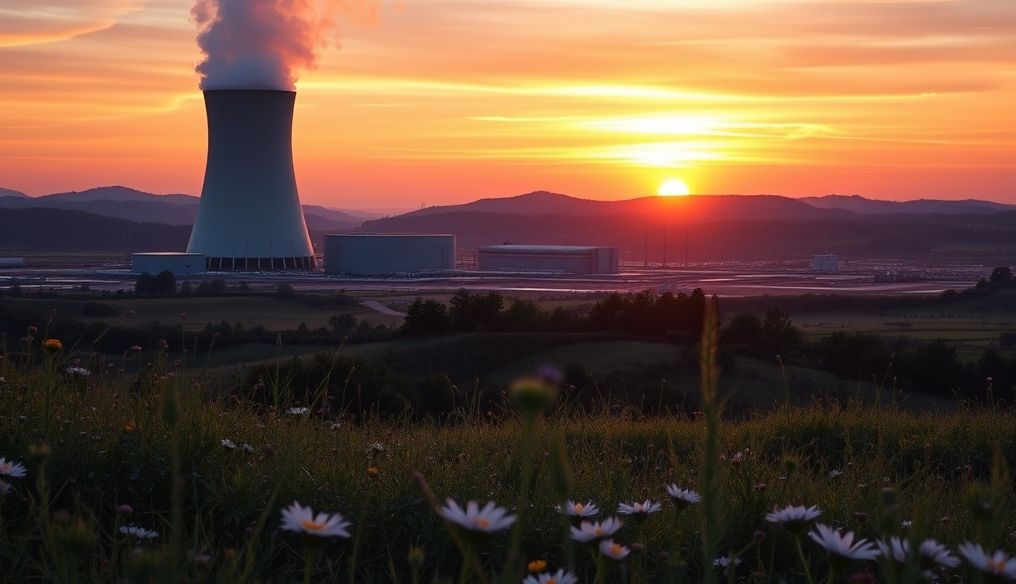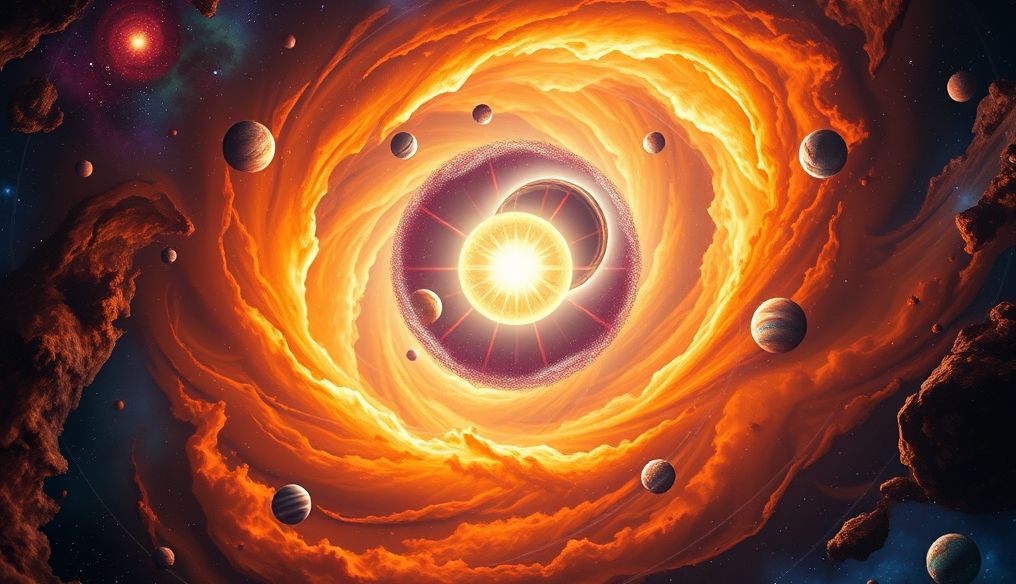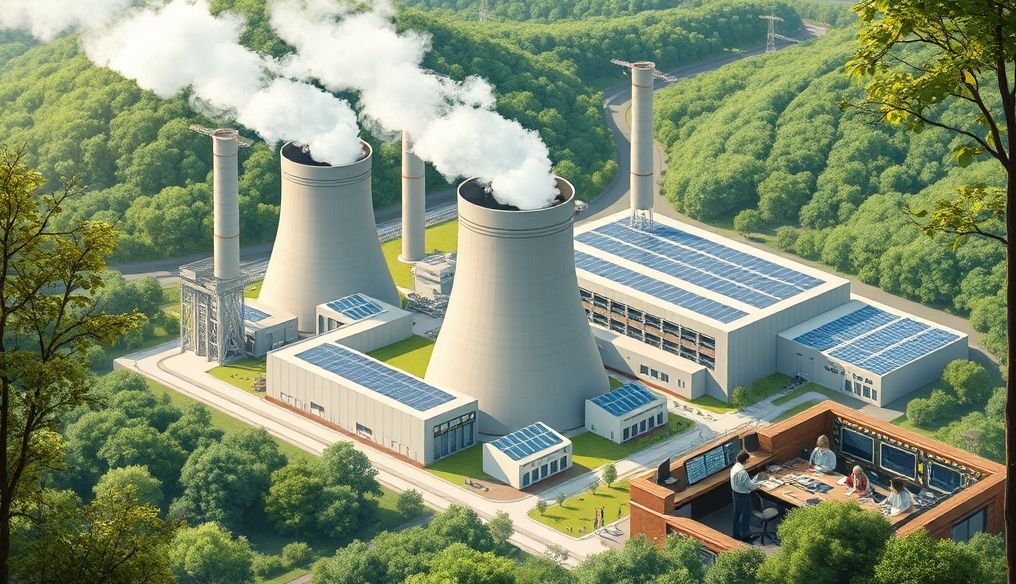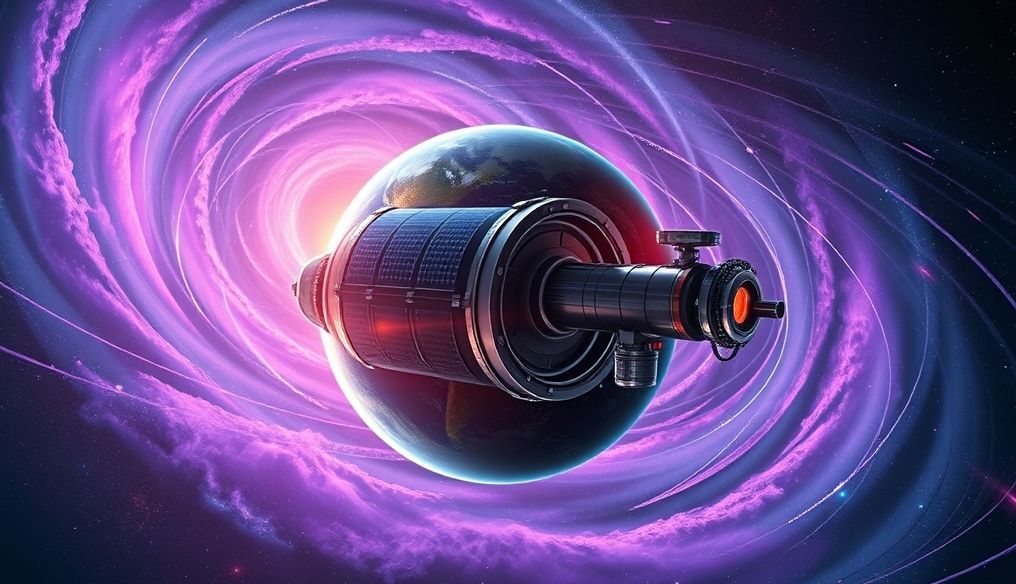Introduction: Nuclear Energy Facing Global Challenges
With increasing energy demand and the need to reduce carbon emissions, nuclear energy stands out as a controversial option. Some see it as a promising solution, while others warn of potential risks. This article aims to provide a comprehensive analysis of nuclear energy, from its operating principles to assessing its safety and environmental impact.
How Nuclear Energy Works: Basics of Nuclear Fission
Nuclear energy relies on the process of nuclear fission, where the nucleus of a heavy atom (such as uranium-235) splits into two smaller nuclei, releasing a tremendous amount of energy. This thermal energy is used to heat water and convert it into steam, which drives turbines to generate electricity.
Simplified Explanation of the Fission Process
- Bombarding the Nucleus with Neutrons: The uranium-235 nucleus is bombarded with a neutron.
- Splitting the Nucleus: The nucleus absorbs the neutron and splits, releasing two smaller nuclei and 2-3 more neutrons.
- Chain Reaction: The released neutrons collide with other uranium nuclei, causing them to fission and release more neutrons, and so on.
- Controlling the Reaction: Control rods (usually made of boron or cadmium) are used to absorb some of the neutrons, thereby controlling the speed of the chain reaction and preventing an explosion.
Components of a Nuclear Power Plant: A Detailed Look
A nuclear power plant consists of several main components that work together to produce electricity safely and efficiently.
- Nuclear Reactor: The heart of the plant, where nuclear fission occurs.
- Steam Generator: Uses the heat from the reactor to heat water and convert it into steam.
- Turbines: The steam drives the turbines, which convert kinetic energy into mechanical energy.
- Electric Generator: Converts mechanical energy from the turbines into electrical energy.
- Cooling System: Removes excess heat from the reactor to prevent overheating and problems.
- Containment System: A strong structure designed to prevent the leakage of radioactive materials in the event of an accident.
Advantages of Nuclear Energy: Promising Solutions to Environmental Challenges
Nuclear energy offers several advantages that make it an attractive option in the context of the search for clean and sustainable energy sources.
- Low Carbon Emissions: Nuclear power plants do not produce significant greenhouse gas emissions during operation, contributing to the fight against climate change.
- Stable and Reliable Energy Production: Unlike renewable energy sources (such as solar and wind), nuclear power plants can operate around the clock, regardless of weather conditions.
- High Efficiency: A small amount of nuclear fuel can produce a large amount of energy.
- Reduced Dependence on Fossil Fuels: Nuclear energy can reduce countries' dependence on oil and natural gas, enhancing energy security.
Risks of Nuclear Energy: Between Potential Accidents and Waste Management
Despite the advantages, nuclear energy involves risks that must be taken into account.
Nuclear Accidents: Lessons from the Past
Accidents such as Chernobyl and Fukushima have shown the dire consequences that can result from nuclear accidents, including radioactive contamination, deaths, and forced displacement of populations.
Nuclear Waste Management: An Ongoing Challenge
Radioactive nuclear waste remains dangerous for thousands of years, requiring safe and long-term storage solutions. The challenge lies in finding stable geological storage sites that are acceptable to the public.
Nuclear Weapons Proliferation: A Potential Risk
There is concern that the technologies used in nuclear energy production can also be used to produce nuclear weapons, increasing the risk of nuclear proliferation.
Nuclear Safety: Preventive Measures and Advanced Technologies
The nuclear energy industry pays great attention to safety, using a variety of preventive measures and advanced technologies to reduce risks.
- Modern Reactor Designs: Modern reactors include advanced safety features, such as automatic shutdown systems and passive cooling systems that do not rely on electricity.
- Strict Operating Procedures: Nuclear power plants are subject to strict operating procedures and intensive training for personnel to ensure safe operation.
- Oversight and Inspection: Nuclear power plants are subject to strict oversight by national and international regulatory bodies, such as the International Atomic Energy Agency (IAEA).
- Safety Culture: Emphasis is placed on a safety culture in all aspects of work at nuclear power plants, from design to operation and maintenance.
Generation IV Nuclear Reactors: A Promising Future?
Generation IV nuclear reactors represent a major advancement in nuclear energy technology, aiming to improve safety, efficiency, and sustainability.
Features of Generation IV
- More Efficient Fuel Use: Generation IV reactors can use different types of fuel, including recycled nuclear waste.
- Less Waste Production: Generation IV reactors aim to reduce the amount of nuclear waste produced.
- Improved Safety: Generation IV reactors include passive safety features that make them more resistant to accidents.
- Lower Cost: Generation IV reactors aim to be cheaper to build and operate than current reactors.
Nuclear Energy and the Environment: A Comprehensive Assessment of Impacts
The environmental impact of nuclear energy is complex and requires a comprehensive assessment.
- Greenhouse Gas Emissions: Although nuclear power plants do not produce significant greenhouse gas emissions during operation, there are emissions associated with uranium mining, fuel manufacturing, construction, and decommissioning.
- Water Use: Nuclear power plants require large amounts of water for cooling, which can affect local water resources.
- Impact on Wildlife: The construction of nuclear power plants can affect local wildlife.
- Nuclear Waste Management: Storing nuclear waste poses a long-term environmental challenge.
Nuclear Energy: An Ongoing Debate and Future Options
Nuclear energy remains a controversial topic, with experts and the public differing on its role in the future of energy. However, as technology continues to evolve and safety standards improve, nuclear energy may play an important role in meeting global energy needs while reducing dependence on fossil fuels.
Conclusion: Nuclear energy represents a complex solution to the global energy crisis. While it offers significant advantages in terms of low carbon emissions and stable energy production, it also involves risks that must be carefully managed. The future of nuclear energy depends on continued innovation in safety and waste management, as well as open and transparent dialogue with the public.




